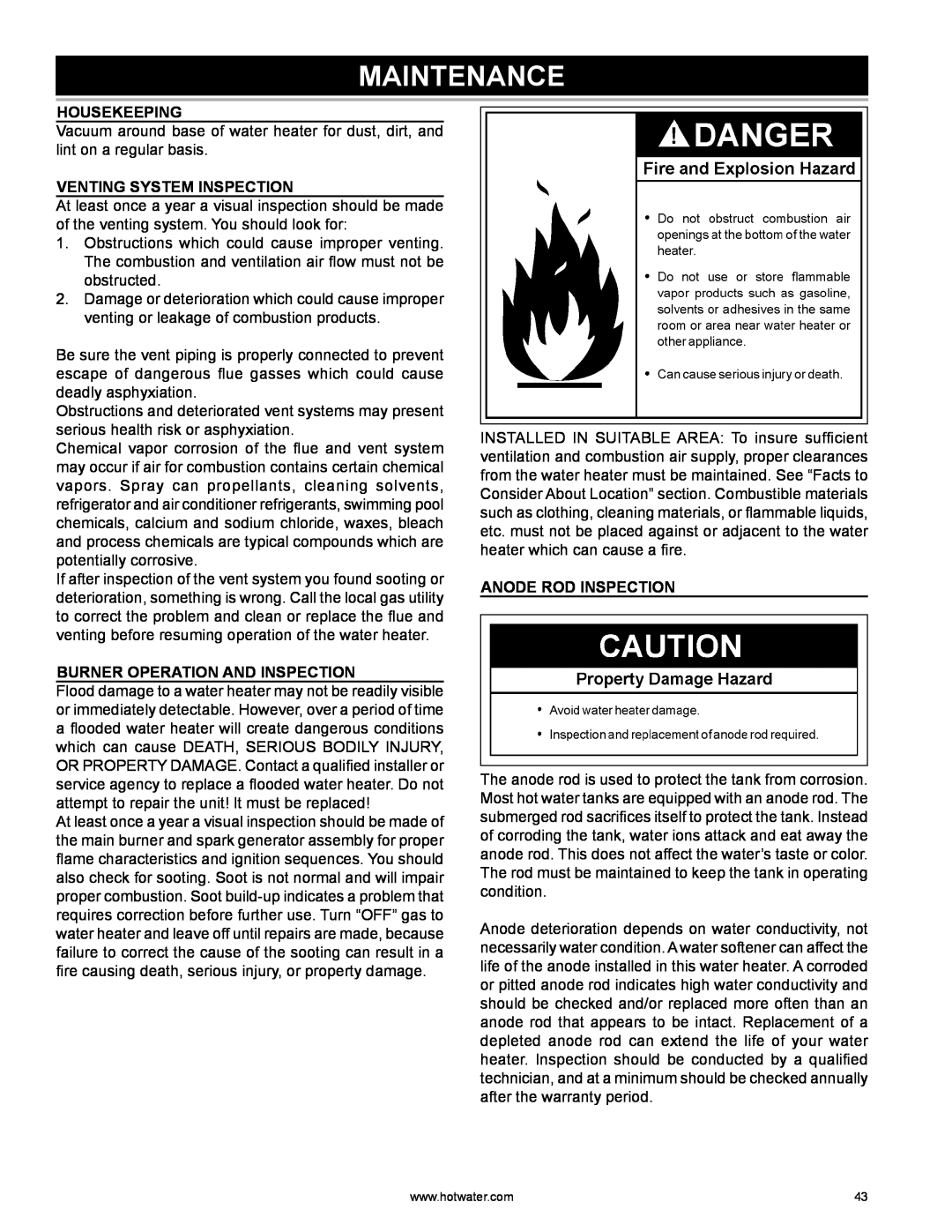
MAINTENANCE
HOUSEKEEPING
Vacuum around base of water heater for dust, dirt, and lint on a regular basis.
VENTING SYSTEM INSPECTION
At least once a year a visual inspection should be made of the venting system. You should look for:
1.Obstructions which could cause improper venting. The combustion and ventilation air flow must not be obstructed.
2.Damage or deterioration which could cause improper venting or leakage of combustion products.
Be sure the vent piping is properly connected to prevent escape of dangerous flue gasses which could cause deadly asphyxiation.
Obstructions and deteriorated vent systems may present serious health risk or asphyxiation.
Chemical vapor corrosion of the flue and vent system may occur if air for combustion contains certain chemical vapors. Spray can propellants, cleaning solvents, refrigerator and air conditioner refrigerants, swimming pool chemicals, calcium and sodium chloride, waxes, bleach and process chemicals are typical compounds which are potentially corrosive.
If after inspection of the vent system you found sooting or deterioration, something is wrong. Call the local gas utility to correct the problem and clean or replace the flue and venting before resuming operation of the water heater.
BURNER OPERATION AND INSPECTION
Flood damage to a water heater may not be readily visible or immediately detectable. However, over a period of time a flooded water heater will create dangerous conditions which can cause DEATH, SERIOUS BODILY INJURY, OR PROPERTY DAMAGE. Contact a qualified installer or service agency to replace a flooded water heater. Do not attempt to repair the unit! It must be replaced!
At least once a year a visual inspection should be made of the main burner and spark generator assembly for proper flame characteristics and ignition sequences. You should also check for sooting. Soot is not normal and will impair proper combustion. Soot
INSTALLED IN SUITABLE AREA: To insure sufficient ventilation and combustion air supply, proper clearances from the water heater must be maintained. See “Facts to Consider About Location” section. Combustible materials such as clothing, cleaning materials, or flammable liquids, etc. must not be placed against or adjacent to the water heater which can cause a fire.
ANODE ROD INSPECTION
The anode rod is used to protect the tank from corrosion. Most hot water tanks are equipped with an anode rod. The submerged rod sacrifices itself to protect the tank. Instead of corroding the tank, water ions attack and eat away the anode rod. This does not affect the water’s taste or color. The rod must be maintained to keep the tank in operating condition.
Anode deterioration depends on water conductivity, not necessarily water condition. A water softener can affect the life of the anode installed in this water heater. A corroded or pitted anode rod indicates high water conductivity and should be checked and/or replaced more often than an anode rod that appears to be intact. Replacement of a depleted anode rod can extend the life of your water heater. Inspection should be conducted by a qualified technician, and at a minimum should be checked annually after the warranty period.
www.hotwater.com | 43 |
